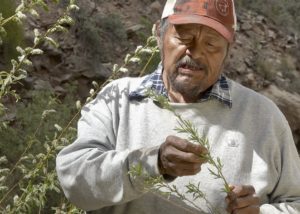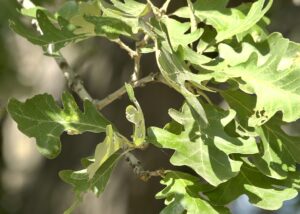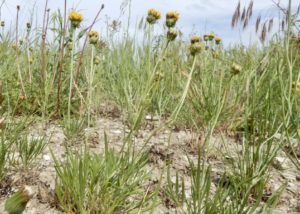Habitat
RiparianPlant Uses
antifungal, antioxidant, improves cognition, improves heart function, reduces lipid peroxidation, relieve inflammation, teaVideo Presenter
John MionczynskiRussian Olive
Elaeagnus angustifolia is commonly known as Russian olive. Native to central and western Asia, in North America it is widely established as an introduced species. It is invasive in many western riparian habitats where it thrives in poor soil and out-competes native vegetation. Because of this, there is an ongoing removal project on the Wind River Reservation.
Despite its status as an invader, the Russian olive shrub has many medicinal properties.
It has three special medicines – beta carboline, beta carotene and quercetin – which concentrate in different parts of the plant at different times of the year. Beta carboline is protective of the neurological tissues and improves neurological functions. The reddish colored berries can be used in medicinal tea or in food as flavoring.
This plant also contains antioxidants, potassium, calcium, chromium, Vitamin K and other important mega and trace minerals which are generally lacking in today’s American diet.






